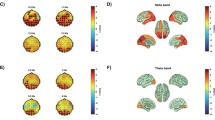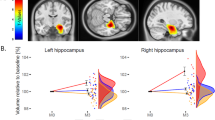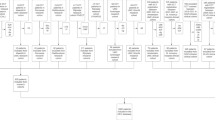Abstract
High rates of early relapse following electroconvulsive therapy (ECT) are typically reported in the literature. Current treatment guidelines offer little information to clinicians on the optimal nature of maintenance therapy following ECT. The aim of this study was to provide a systematic overview of the existing evidence regarding post-ECT relapse. A keyword search of electronic databases was performed for studies appearing in the peer-reviewed literature before January 2013 reporting on relapse rates in responders to an acute course of ECT administered for a major depressive episode. Meta-analyses were performed where appropriate. Thirty-two studies with up to 2 years’ duration of follow-up were included. In modern era studies of continuation pharmacotherapy, 51.1% (95% CI=44.7–57.4%) of patients relapsed by 12 months following successful initial treatment with ECT, with the majority (37.7%, 95% CI=30.7–45.2%) relapsing within the first 6 months. The 6-month relapse rate was similar in patients treated with continuation ECT (37.2%, 95% CI=23.4–53.5%). In randomized controlled trials, antidepressant medication halved the risk of relapse compared with placebo in the first 6 months (risk ratio=0.49, 95% CI=0.39–0.62, p<0.0001, number needed to treat=3.3). Despite continuation therapy, the risk of relapse within the first year following ECT is substantial, with the period of greatest risk being the first 6 months. The largest evidence base for efficacy in post-ECT relapse prevention exists for tricyclic antidepressants. Published evidence is limited or non-existent for commonly used newer antidepressants or popular augmentation strategies. Maintenance of well-being following successful ECT needs to be improved.
Similar content being viewed by others
Log in or create a free account to read this content
Gain free access to this article, as well as selected content from this journal and more on nature.com
or
References
American Psychiatric Association (2001) The Practice of Electroconvulsive Therapy: Recommendations for Treatment, Training, and Privileging. A Task Force Report of the American Psychiatric Association 2nd edn. American Psychiatric Association: Washington, DC, USA.
Arfwidsson L, Arn L, Beskow J (1973). Chlorpromazine and the anti-depressive efficacy of electroconvulsive therapy. Acta Psychiatr Scand 49: 580–587.
Barton JL, Mehta S, Snaith RP (1973). The prophylactic value of extra ECT in depressive illness. Acta Psychiatr Scand 49: 386–392.
Borenstein M, Hedges L, Higgins J, Rothstein H (2011). Comprehensive Meta Analysis Version 2.2.064, Biostat: Engelwood, NJ, USA.
Bruce EM, Crone N, Fitzpatrick G, Frewin SJ, Gillis A, Lascelles CF et al (1960). A comparative trial of ECT and Tofranil. Am J Psychiatry 117: 76.
DerSimonian R, Laird N (1986). Meta-analysis in clinical trials. Control Clin Trials 7: 177–188.
Dunne RA, McLoughlin DM (2012). Systematic review and meta-analysis of bifrontal electroconvulsive therapy versus bilateral and unilateral electroconvulsive therapy in depression. World J Biol Psychiatry 13: 248–258.
Eranti S, Mogg A, Pluck G, Landau S, Purvis R, Brown RG et al (2007). A randomized, controlled trial with 6-month follow-up of repetitive transcranial magnetic stimulation and electroconvulsive therapy for severe depression. Am J Psychiatry 164: 73–81.
Fekadu A, Wooderson SC, Markopoulo K, Donaldson C, Papadopoulos A, Cleare AJ (2009). What happens to patients with treatment-resistant depression? A systematic review of medium to long term outcome studies. J Affect Disord 116: 4–11.
Flint AJ, Rifat SL (1998). Two-year outcome of psychotic depression in late life. Am J Psychiatry 155: 178–183.
Hamilton M (1974). Drug-resistant depressions: response to ECT. Pharmakopsychiatr Neuropsychopharmakol 7: 205–206.
Heijnen WT, Birkenhager TK, Wierdsma AI, van den Broek WW (2010). Antidepressant pharmacotherapy failure and response to subsequent electroconvulsive therapy: a meta-analysis. J Clin Psychopharmacol 30: 616–619.
Higgins JP, Thompson SG, Deeks JJ, Altman DG (2003). Measuring inconsistency in meta-analyses. BMJ 327: 557–560.
Imlah NW, Ryan E, Harrington JA (1965). The influence of antidepressant drugs on the response to electroconvulsive therapy and on subsequent relapse rates. Neuropsychopharmacol 4: 438–442.
Kay DW, Fahy T, Garside RF (1970). A seven-month double-blind trial of amitriptyline and diazepam in ECT-treated depressed patients. Br J Psychiatry 117: 667–671.
Kellner CH (2013). Relapse after electroconvulsive therapy (ECT). J ECT 29: 1–2.
Kellner CH, Knapp R, Husain MM, Rasmussen K, Sampson S, Cullum M et al (2010). Bifrontal, bitemporal and right unilateral electrode placement in ECT: randomised trial. Br J Psychiatry 196: 226–234.
Kellner CH, Knapp RG, Petrides G, Rummans TA, Husain MM, Rasmussen K et al (2006). Continuation electroconvulsive therapy vs pharmacotherapy for relapse prevention in major depression: a multisite study from the Consortium for Research in Electroconvulsive Therapy (CORE). Arch Gen Psychiatry 63: 1337–1344.
Krog-Meyer I, Kirkegaard C, Kijne B (1984). Prediction of relapse with the TRH test and prophylactic amitriptyline in 39 patients with endogenous depression. Am J Psychiatry 141: 945–948.
Lauritzen L, Odgaard K, Clemmesen L, Lunde M (1996). Relapse prevention by means of paroxetine in ECT-treated patients with major depression: a comparison with imipramine and placebo in medium-term continuation therapy. Acta Psychiatr Scand 94: 241–251.
Lisanby SH, Sampson S, Husain MM, Petrides G, Knapp RG, McCall WV et al (2008). Toward individualized post-electroconvulsive therapy care: piloting the Symptom-Titrated, Algorithm-Based Longitudinal ECT (STABLE) intervention. J ECT 24: 179–182.
Loo CH, Katalinic N, Martin D, Schweitzer I (2012). A review of ultrabrief pulse width electroconvulsive therapy. Ther Adv Chronic Dis 3: 69–85.
Martinez-Amoros E, Cardoner N, Soria V, Galvez V, Menchon JM, Urretavizcaya M (2012). Long-term treatment strategies in major depression: a 2-year prospective naturalistic follow-up after successful electroconvulsive therapy. J ECT 28: 92–97.
Navarro V, Gastobal C, Torres X, Masana G, Penades R, Guarch J et al (2008). Continuation/maintenance treatment with nortriptyline versus combined nortriptyline and ECT in late-life psychotic depression: a two-year randomized study. Am J Geriatr Psychiatry 16: 498–505.
Prudic J, Haskett RF, McCall WV, Isenberg K, Cooper T, Rosenquist PB et al (2013). Pharmacological strategies in the prevention of relapse after electroconvulsive therapy. J ECT 29: 3–12.
Prudic J, Haskett RF, Mulsant B, Malone KM, Pettinati HM, Stephens S et al (1996). Resistance to antidepressant medications and short-term clinical response to ECT. Am J Psychiatry 153: 985–992.
Prudic J, Sackeim HA, Devanand DP (1990). Medication resistance and clinical response to electroconvulsive therapy. Psychiatry Res 31: 287–296.
Rush AJ, Trivedi MH, Wisniewski SR, Nierenberg AA, Stewart JW, Warden D et al (2006). Acute and longer-term outcomes in depressed outpatients requiring one or several treatment steps: a STAR*D report. Am J Psychiatry 163: 1905–1917.
Sackeim HA (1994). Continuation therapy following ECT: directions for future research. Psychopharmacol Bull 30: 501–521.
Sackeim HA, Dillingham EM, Prudic J, Cooper T, McCall WV, Rosenquist P et al (2009). Effect of concomitant pharmacotherapy on electroconvulsive therapy outcomes: short-term efficacy and adverse effects. Arch Gen Psychiatry 66: 729–737.
Sackeim HA, Haskett RF, Mulsant BH, Thase ME, Mann JJ, Pettinati HM et al (2001). Continuation pharmacotherapy in the prevention of relapse following electroconvulsive therapy: a randomized controlled trial. JAMA 285: 1299–1307.
Sackeim HA, Prudic J, Devanand DP, Decina P, Kerr B, Malitz S (1990). The impact of medication resistance and continuation pharmacotherapy on relapse following response to electroconvulsive therapy in major depression. J Clin Psychopharmacol 10: 96–104.
Seager CP, Bird RL (1962). Imipramine with electrical treatment in depression: a controlled trial. J Ment Sci 108: 704–707.
The UK ECT Review Group (2003). Efficacy and safety of electroconvulsive therapy in depressive disorders: a systematic review and meta-analysis. Lancet 361: 799–808.
van den Broek WW, Birkenhager TK, Mulder PG, Bruijn JA, Moleman P (2006). Imipramine is effective in preventing relapse in electroconvulsive therapy-responsive depressed inpatients with prior pharmacotherapy treatment failure: a randomized, placebo-controlled trial. J Clin Psychiatry 67: 263–268.
Wijkstra J, Nolen WA, Algra A, van Vliet IM, Kahn RS (2000). Relapse prevention in major depressive disorder after successful ECT: a literature review and a naturalistic case series. Acta Psychiatr Scand 102: 454–460.
Yildiz A, Mantar A, Simsek S, Onur E, Gokmen N, Fidaner H (2010). Combination of pharmacotherapy with electroconvulsive therapy in prevention of depressive relapse: a pilot controlled trial. J ECT 26: 104–110.
Acknowledgements
We would like to thank Dr T.K. Birkenhäger, Dr V. Navarro, and Dr H.A. Sackeim for providing us with additional information about their studies. The study was devised by AJ and DMM and data were collected by AJ and EK. All the authors were involved in interpretation of the results, drafting and revising the manuscript, and approved the final version. This work was supported by awards from the Health Research Board (TRA/2007/5 awarded to Declan McLoughlin) and the Friends of St. Patrick’s Hospital. These organisations had no roles in the design of the study, collection and analysis of data or the decision to publish. The authors declare that there are no competing financial interests in relation to the work described.
Author information
Authors and Affiliations
Corresponding author
Additional information
Supplementary Information accompanies the paper on the Neuropsychopharmacology website
Supplementary information
Rights and permissions
About this article
Cite this article
Jelovac, A., Kolshus, E. & McLoughlin, D. Relapse Following Successful Electroconvulsive Therapy for Major Depression: A Meta-Analysis. Neuropsychopharmacol 38, 2467–2474 (2013). https://doi.org/10.1038/npp.2013.149
Received:
Revised:
Accepted:
Published:
Issue date:
DOI: https://doi.org/10.1038/npp.2013.149
Keywords
This article is cited by
-
Multiomics and blood-based biomarkers of electroconvulsive therapy in severe and treatment-resistant depression: study protocol of the DetECT study
European Archives of Psychiatry and Clinical Neuroscience (2024)
-
Electroconvulsive Therapy Beyond Schizophrenia and Bipolar Disorders
Current Behavioral Neuroscience Reports (2024)
-
Clinical characteristics and potential association to Parkinson’s disease and dementia with Lewy bodies in patients with major depressive disorder who received maintenance electroconvulsive therapy: a retrospective chart review study
BMC Psychiatry (2023)
-
Impact of COVID-19 on electroconvulsive therapy practice across Canadian provinces during the first wave of the pandemic
BMC Psychiatry (2023)
-
ChatGPT: five priorities for research
Nature (2023)



